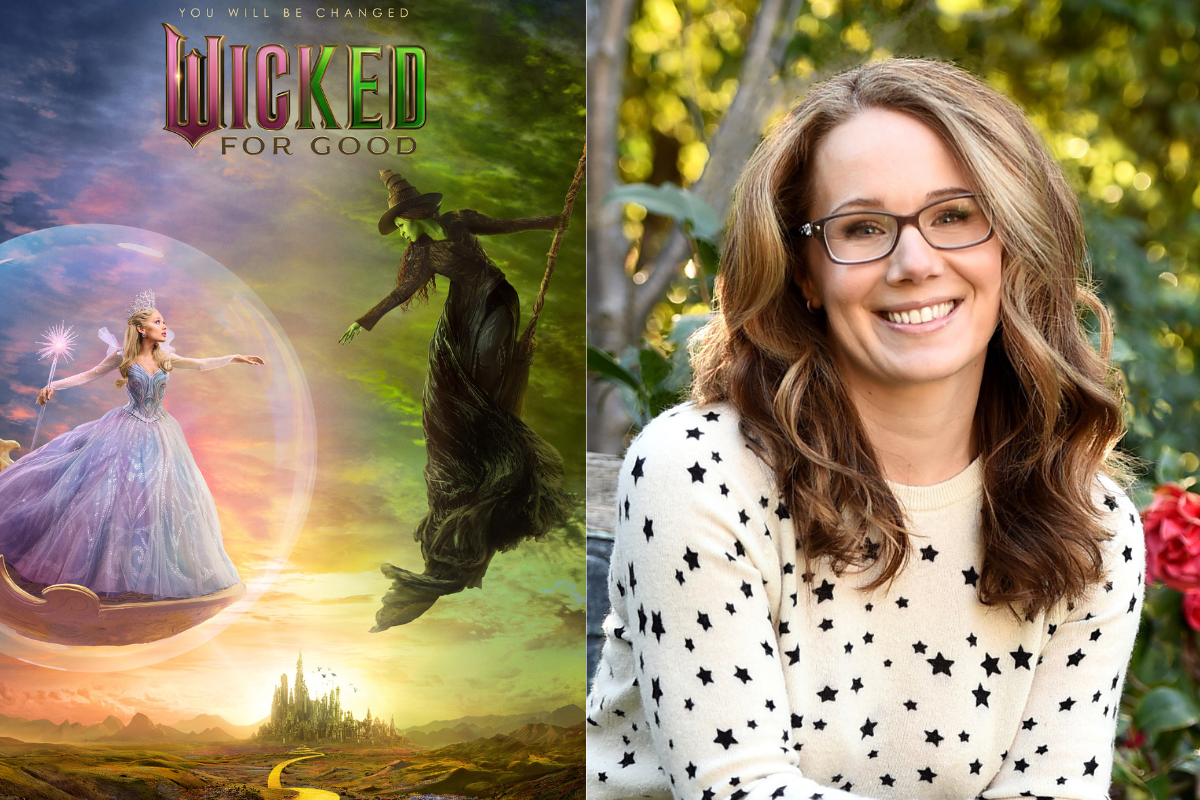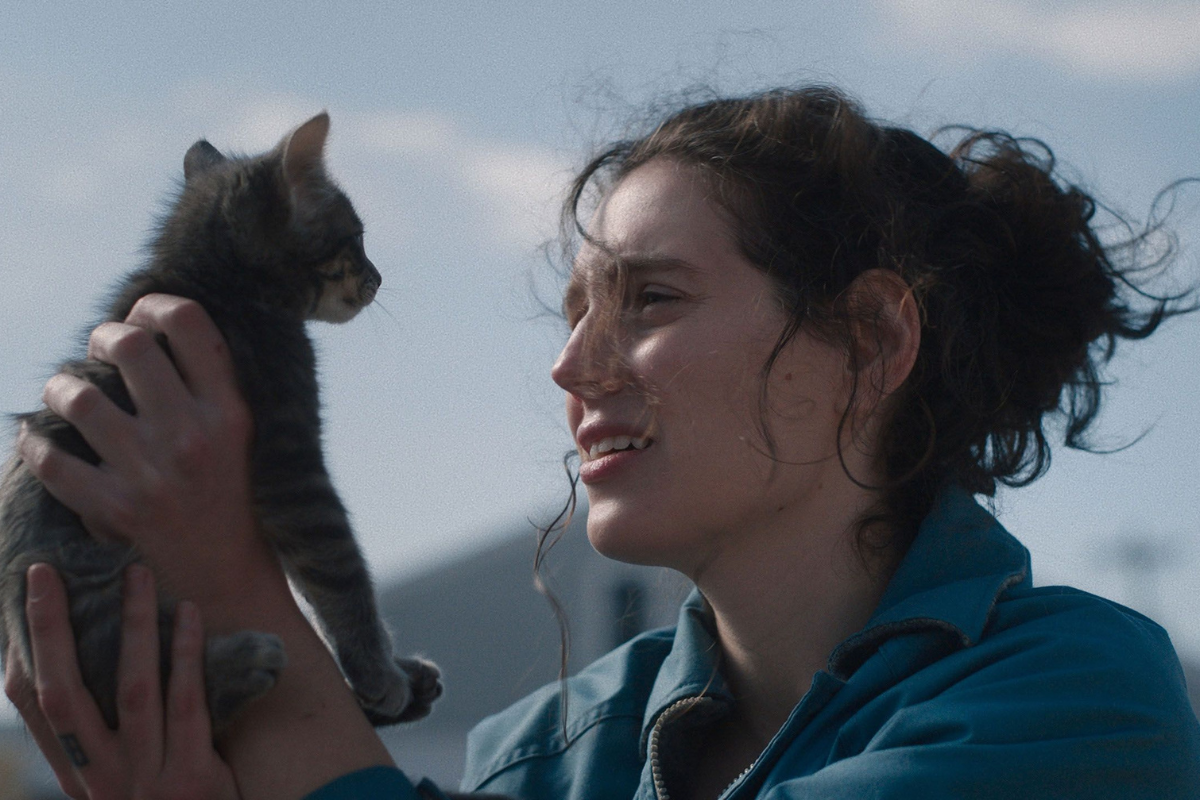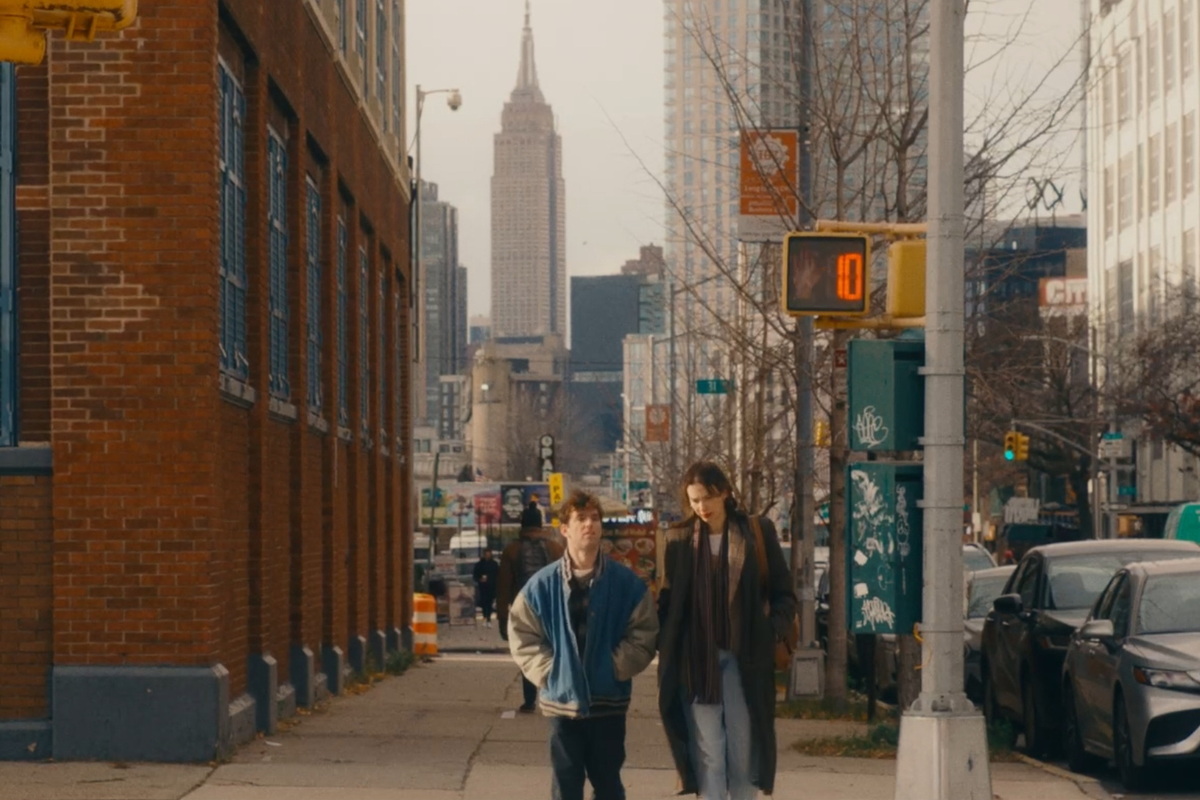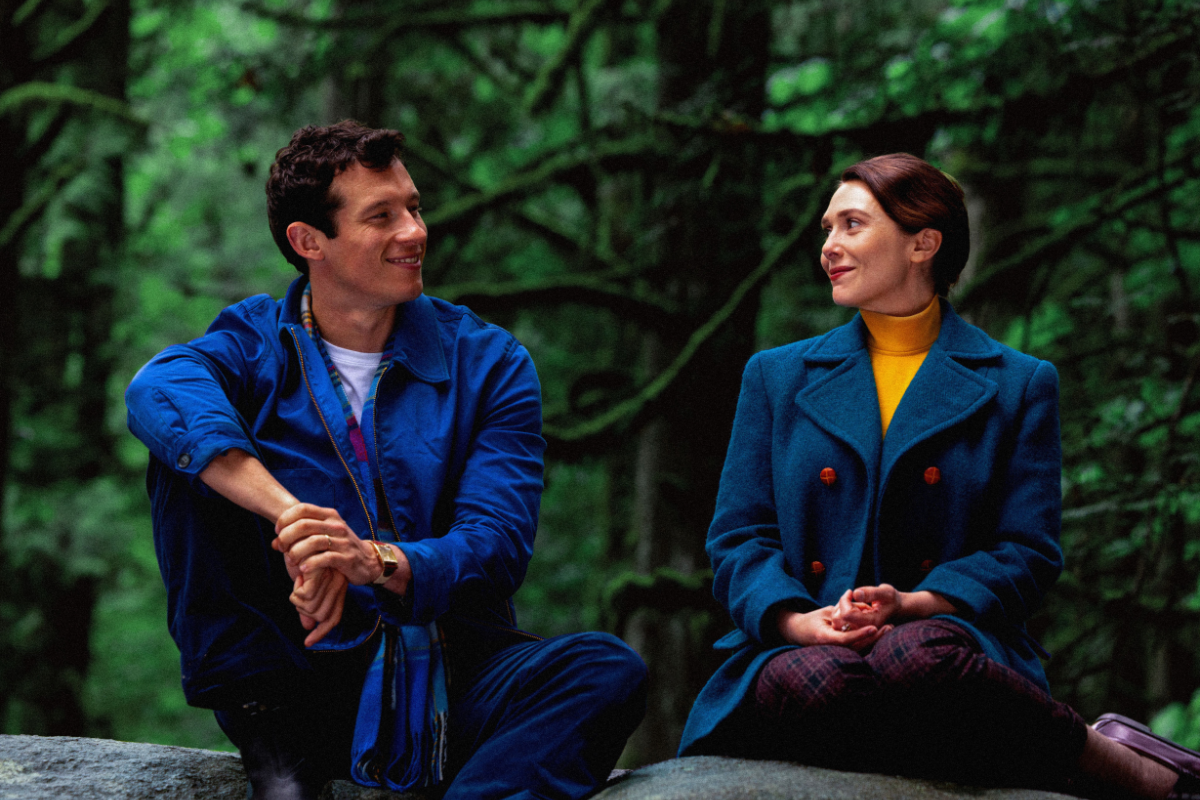How Filmmaker Ann Oren Found the Cinematic Language in ‘Piaffe’
Ann Oren recently spoke with Script about why she wanted to make a film about a foley artist, why the collaboration with her cinematographer and production designer was important in establishing the cinematic language of the film, her background as a visual artist, and so much more.
Introverted and unqualified, Eva is unexpectedly tasked with foleying the sound for a commercial featuring a horse. As she slowly acclimates to the new job, her obsession with creating the perfect equine sounds grows into something more tangible. Eva harnesses this new physicality, becoming more confident and empowered, and lures an unassuming botanist into an intriguing game of submission. Shot on lush 16mm, PIAFFE is a visceral journey into control, gender, and artifice.
Piaffe is a complete visceral viewing and auditory experience. The world is unique to itself, and the film's few characters keep you emotionally engaged and bemused all at the same time.
Director and co-writer Ann Oren, a visual artist and filmmaker, takes a simple idea and greatly expands upon it, adding deep and rich complexities. You can't help but think, of course, it's art imitating life...or actually is it life imitating art? The blurred lines intersect, and it's a fascinating visual ride.
Ann Oren recently spoke with Script about why she wanted to make a film about a foley artist, why the collaboration with her cinematographer and production designer was important in establishing the cinematic language of the film, her background as a visual artist, and so much more.
This interview has been edited for content and clarity.
Sadie Dean: Where did the seed for this story come from for you?
Ann Oren: Well, the whole idea for the film, I was always really fascinated with foley artists. So, I knew one day, I'm gonna make a film about a foley artist. My background is more as a visual artist, and I kind of avoided making narrative films. I think it took me some time to find a cinematic language with which I can tell a story where I feel I have something to add. So, it's like the way of telling it and what the story is, kind of came together to make me want to pursue making this film. I just had an idea in my head to make a film about a foley artist who's creating sounds for a horse and she grows horsetail - I had this sentence in my head.
I really wanted to use sound as the chief storytelling tool, because I think it's very interesting how it works. Viewers are not so much aware of the workings of sounds on them psychologically. With images, they understand what's going on, I think, but with sound, you have to see it a few times, if you’re like a real professional, you're going to notice some things. So, I wanted to make a film that would talk to the body of the viewer. Maybe you would leave the cinema with it in your body and later your mind has to catch up with it. So, a lot of things are left open in this way on purpose.
And then the character, I just imagined the person that is spending a lot of time home alone and experiences a certain coming of age through the process of being better at what they're doing. And in the case of Eva, she has to jump in on the job. So, the viewer whether learns how to do the foley and what it is to make foley in the psychology of being a foley artist. Yeah, that along with talking to some foley artists to kind of get into the vibe of into their state of mind when they're working.
Sadie: Going off of that. how much during the process of making this film, were you observing your foley artist Jonas [Vicent] and your sound designer, Robert [Hefter] and did that shape the character or world itself?
Ann: Well, Robert was the one chiefly responsible for the sound in the film, because he recorded the sound on set. And a lot of that is actually what we use, and he mixed it in the end. So, he was doing the sound concept. And in reality, I interviewed other foley artists, there are not so many, I live in Berlin, so there's like three there. I interviewed those who were willing to talk to me and actually a little bit early on because I made a short film before, Passage, that was also with a foley artist, it's a prequel to Piaffe.
And that was part of the research, but a lot of it is actually trying to do it yourself. To make foley there's no one way to create sound. Think about in an animation, you have to make sound for wings of a dragon, you can create a lot of different emotions. And it's up to the director, what they're looking for, really to convey. So, I was more like using my own imagination. And then in the actual foley in the film, we use a lot of the things that we recorded on set, because many times on the set, there are microphones really close to the actors. And also, when we did do foley, some of the things in Piaffe I actually had to direct the foley artist. So, the sound concept really was in the script already. Very important.
INDIE SPOTLIGHT: Interview with 'Bad Things' Horror Writer-Director Stewart Thorndike
Sadie: Visually, this film is stunning. The shots, the colors, the visual textures are all very intentional. What was the collaboration process like with your cinematographer Carlos [Vasquez] and how did you two hone the visual language for this movie?
Ann: Well, a lot of it had to do also with the production design and the sets, because we were a pretty small production. I spent a lot of time with the production designer, actually scouting and making sure that we find locations that are as close as what I have in mind as possible, so we need to do minimal dressing. Carlos has a lot of experience working with film, which was very important for me. And I had some very specific images in my head and I started just laying out kind of like a shot list. And then I showed it to him, and he suggested some things. But the production design was really important, also in the costumes to give like certain colors and then you just kind of like riff on each other when you're getting ready to shoot.
Sadie: In terms of the color palette, the colors blue, red and green are very vibrant. Why choose those colors?
Ann: Well, the piaffe, the title of the film, is a horse dressage move when it's trotting in place. And I immediately made this connection to the way the techno dancers are dancing, which exactly looks like this. So, from the beginning, I made this connection with techno and I thought about the blue and red colors originally is like colors in the club. And then, when thinking about the palette, I thought that it would be good to associate colors with those two characters. So, everything that I associated with Eva was kind of like Blue Velvet color, and everything associated with Zara is red. So sometimes I was playing with this in different scenes, sometimes when she's thinking about Zara, there are these flares of red or in the production design or in the lighting, or in the light leaks, which I refer to as flares and actually these are things that happen sometimes when you're shooting on film. But I use it dramatically in the editing in order to enhance the presence of a character that is sometimes not there.
Sadie: It’s very beautifully done. What was your process of writing this as a narrative story and working with your co-writer?
Ann: I didn't do it in the most classic process, it took some time to actually have the script. I had an idea, like the rose scene was the first thing that I wrote. So, I just had an idea for a couple of scenes. There was the Fotoplastikon, what you see at the beginning of the film. I had ideas for some scenes, but it wasn't like a real solid narrative. And then I met Thais [Guisasola], my co-author, at the time she was in Berlin, she's Brazilian, but she was in Berlin. And I said, ‘I want to write with somebody, try to create a narrative.’ And so, we talked about all the concepts that I wanted to put together. And she was suggesting how to tailor it into a story.
And it took some time. I think it took at least two years until the script was ready to present to a producer potentially as a film because it was only I think, 50 pages in the end, which is very short. There's almost no dialogue, I describe things like costumes and sounds and things that you don't really have in a script. If you would read the script, it really looks like the film, but it's not traditional. We just did a few drafts back and forth.
And a lot of things also changed like in the editing, because there are some concepts that - and this may be from my background as a visual artist - that I wanted to almost like ‘sculpting with images,’ because I was also editing the film, so I could demonstrate it in this way. I think now I understand properly how you're supposed to do it [laughs] at a script stage. It was not a traditional script writing process. And Thais had a lot of patience [laughs] so that was fantastic.
Sadie: What was the inspiration for you to take that leap from being a visual artist to making a narrative film like Piaffe?
Ann: Well, my work was always in the moving images. I studied film, actually, originally, but at the time, I didn't want to make narrative films because I felt like directors are working with the viewers, so to say, in the same way for so many years, and I felt that I need to make a film that I feel that I can make and no one else can make otherwise, enough people are doing this. And then I was going on to the visual arts and I was interested in working with installation with multi-channel, meaning several screen works, I did some animation, I used found footage to create new meaning. Conceptual works or anything like but narratives, some experimental narrative, but not really, I really didn't want to tell the story.
And I think it just, with this idea of a foley artist, and I had the idea with the horse and a lot of the elements in the film I was familiar with in my life in different ways, and not as they are in the film. But a lot of content that I wanted to put together and so it just happened, and I said, ‘Maybe I should try.’ And then thought of actually how to make it and using the sound more and using colors and sculpting something. So, I felt that actually my understanding of working in an installation helped me try to create a narrative that is really working with the body of the viewer in the cinema. I think that this is how I rolled into it.
Tapping Into the Forward Momentum of Rom-Com 'The List' with Director Melissa Miller Costanzo
And then as you start making a film, I never worked like this, you don't have producers and even though we're a small team, still there is a team and everybody that worked on the film was really enthused about it. And it's a completely different way of working as opposed to an artist that you're doing it. Maybe some people are helping you, but all the content and the vision is purely on you and here I was able to more collaborate and have dialogue with a lot of different professionals. So, it's a new journey.
Sadie: Because of your background as a visual artist, do you ever go into your own exhibits to observe how people are reacting to your art? And has that helped in anyway translate into how you're portraying an image in your films?
Ann: Yeah, but I think in art world, like in an exhibition, you don't get as much feedback on the work as you do when you make a film. And when you make a film, and you show it in festivals, or in any screenings where I'm present, when people talk to me, or I do interviews, since our premiere we had at Locarno a year ago, I talked so many times about the film with so many people that I really get an understanding of what people got from it. But when I'm presenting an artwork, if you have a particular meeting with somebody that comes to the exhibition, you get a sense of what they feel about it otherwise, I don't know if I can learn so much more than what they're experiencing in an exhibition space.
So yeah, I think it's more an understanding of looking at other media that we're consuming. Like a lot of it is through a computer, like streaming services, and seeing what happens in the cinema. And for me to just imagine about the psychology, for me as a viewer, what is happening to me, and then what I think can be edited. This is what I'm trying to create in my film.
Sadie: Do you prefer immediate feedback and reactions to work?
Ann: I think it's very interesting to get feedback about the film. I think it's part of what makes it worth it for me to be traveling, I've been like everywhere this year. That's what's worth it, because you’re really invested, it takes you a few years to work on a film. And then you have a dialogue about it. And people come to you and they're saying that they're really touched by the character, people from different backgrounds, and for different reasons.
Even like in Locarno, we got the Junior Jury Award from the from the young jury, and I didn't know what would be exactly the target audience – who knew very young people were really into the film. I thought they probably don't see a lot of films on film. And there is this old-world tactile film vibe in the film that I didn't know how they would react to but they really responded to it. They were talking to me afterwards. And then every time I'm present in a screening, people talk to me. And usually, they come to you when they're very enthused. And then it's interesting to hear what they're enthused about. And sometimes they have questions and also from the questions, it's interesting to learn some things.
Sadie: Are there certain themes or stories that you're just interested in exploring through your work?
Ann: Yeah, absolutely. I'm already writing my next film, of course. I'm really interested in the bodily experience. And how we communicate through feelings that we have when we're next to somebody and we communicate something, it doesn't matter what we're saying as far as with dialogue. I'm interested in so different ways of communicating through the body and a now more interested in relationships between people and plants, and people and mushrooms and I don't want to say anymore. [laughs] Yeah, interspecies connections. Bodily connections. And looking at other species as a sensitively as the human characters. I'm excited to further the cinematic language that I established in Piaffe into the next film.
Sadie: Any advice for fellow visual artists like yourself who are stepping into the narrative film world?
Ann: I just think be really honest about what you're interested in. And it's really, you are collaborating with a lot of people, but really insist on your vision and try to convince the people you're working with, through communication and through passion. And hopefully, this will lead them to make the film that you want to make together.
Piaffe opens in New York at The Quad on August 25, 2023, and opens in Los Angeles at Nuart Theatre on September 15, 2023. For a list of additional dates and Theaters, click here.
Learn more about the craft and business of screenwriting and television writing from our Script University courses!
Sadie Dean is the Editor of Script Magazine and writes the screenwriting column, Take Two, for Writer’s Digest print magazine. She is also the co-host of the Reckless Creatives podcast. Sadie is a writer and filmmaker based in Los Angeles, and received her Master of Fine Arts in Screenwriting from The American Film Institute. She has been serving the screenwriting community for nearly a decade by providing resources, contests, consulting, events, and education for writers across the globe. Sadie is an accomplished writer herself, in which she has been optioned, written on spec, and has had her work produced. Additionally, she was a 2nd rounder in the Sundance Screenwriting Lab and has been nominated for The Humanitas Prize for a TV spec with her writing partner. Sadie has also served as a Script Supervisor on projects for WB, TBS and AwesomenessTV, as well as many independent productions. She has also produced music videos, short films and a feature documentary. Sadie is also a proud member of Women in Film.
Follow Sadie and her musings on Twitter @SadieKDean







